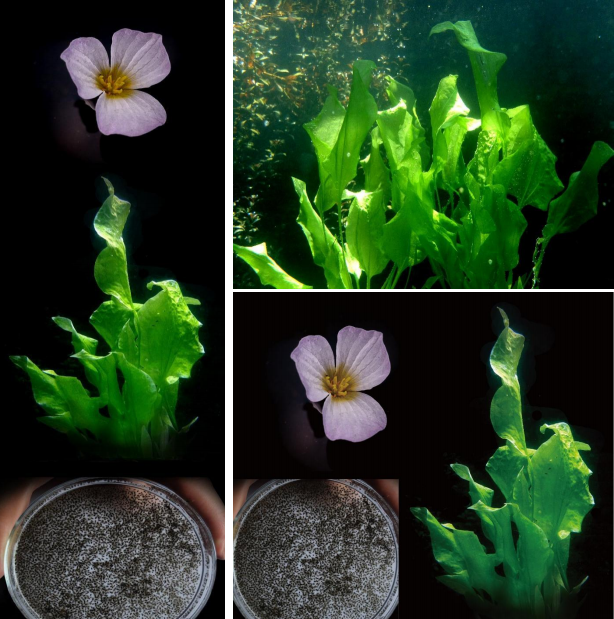Study Uncovers How Aquatic Plant Coordinates Multiple Photosynthetic Strategies
2025-11-25
A recent study of the Wuhan Botanical Garden, Chinese Academy of Sciences, has identified a unique ability of the aquatic plant Ottelia alismoides to simultaneously employ three CO₂ concentrating mechanisms (CCMs). This observation offers new insights into how these pathways, typically considered incompatible within the same plant tissue, can operate concurrently.
Many plants maximize photosynthetic efficiency through CCMs, with C4 photosynthesis and Crassulacean acid metabolism (CAM) representing two classic biochemical CCM pathways. While these two pathways are generally considered incompatible within the same plant tissue due to significant divergence in carbon fixation timing, spatial organization, and metabolite transport.
However, Ottelia alismoides presents a unique case. It uniquely possesses all three CCMs: constitutive C4 photosynthesis (NAD-ME subtype), inducible CAM, and bicarbonate (HCO3-) utilization. How these three CCMs coordinate without interference at cellular level remains unknown molecularly and physiologically.
Researchers addressed this question. They systematically elucidated the cooperative integration mechanism of C4 photosynthesis, CAM, and HCO3- utilization within single cells by cultivating O. alismoides under high and low CO₂ concentrations, combined with diel time-series sampling and employing techniques such as key enzyme activity assays, subcellular localization, transcriptomics, proteomics, and 13C isotopic labeling.
The findings indicate that in O. alismoides, unlike canonical NAD‐ME subtypes, malate is the first stable compound, produced by a cytosolic malate dehydrogenase, rather than aspartate produced by aspartate aminotransferase. O. alismoides achieves efficient coordination of three CCMs (C4, CAM and HCO3- utilization) through temporal regulation of key enzyme isoforms with distinct expression patterns.
During night, phosphorylated phosphoenolpyruvate carboxylase (PEPC) isoform3 fixes carbon to produce malate via MDH1 (malate dehydrogenase 1) isoform2 catalysis, which is then transported into vacuoles by upregulated tonoplast dicarboxylate transporter (TDT) to complete the CAM cycle. In daylight, HCO3- supplied by αCA1(a carbonic anhydrase) and SLC4(a SoLute Carrier) is fixed by phosphorylated PEPC isoform2 to initiate C4 metabolism via malate synthesis catalyzed by MDH1 isoform1. Malate from both pathways is transported into mitochondria via dicarboxylate transporter (DTC) and decarboxylated by NAD-ME to supply CO₂ for the Calvin cycle in chloroplasts.
Results have been published in New Phytologist entitled "A novel single-cell NAD-MEC4subtype integrated with CAM and bicarbonate use in an aquatic plant" . This study was supported by the National Natural Science Foundation of China, the Youth Innovation Promotion Association CAS, and the Chinese Academy of Sciences President's International Fellowship Initiative.

Coordinated metabolic model of HCO₃⁻ utilization, C₄ and CAM pathways in Ottelia alismoides (Image by WBG)

The Ottelia alismoides (Image by FU Wenlong)